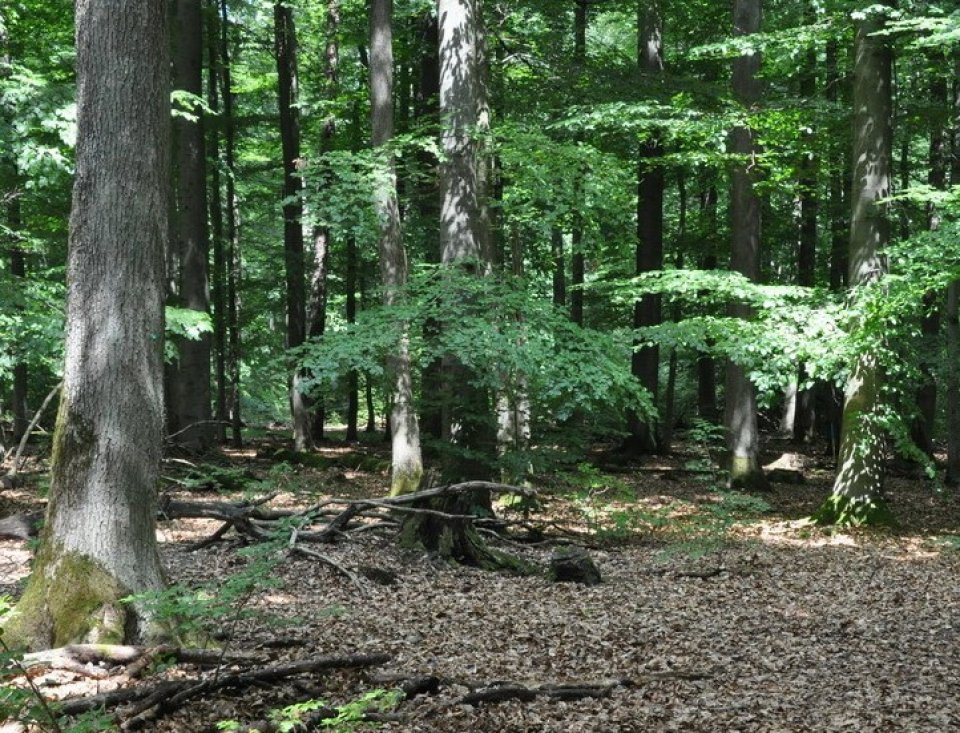
The Marteloscope ‘Steinkreuz’ is located at the Ebrach State Forest Entreprise (BaySF). The enterprise manages an area of around 17,000 ha of state forest in the Steigerwald region, located between Würzburg and Nürnberg in North-Western Bavaria. The forests are composed of 72 % broadleaved species (Beech 40 %, Oak 23 %) and 28 % coniferous species (pine being the dominant species with around 15 %). The actual average stock is 370 m3 /ha and the annual cutting rate amounts to approximately 100,000 m3. Around 80 % of deciduous timber is marketed in the region to more than 60 sawmills. Almost 25,000 m3 of sold fuelwood make Ebrach one of the largest producers in Germany.
The objective is to demonstrate how nature conservation can be integrated into practical forest management. Steinkreuz is part of the “European demonstration site network for integrating biodiversity conservation into forest management” (https://www.oppla.eu/casestudy/18019).
The site has been utilised for training and excursions many times by international, national and local groups (Schuck et al., 2016). Especially identifying habitat trees and tree related microhabitats we in focus of the training when implementing virtual tree selection exercises.
Marteloscopes can be used for implementing virtual tree selection exercises. They allow to train and eventually improve decision making capacities related to integrating biodiversity aspects into forest management. A software running on mobile devices displays tree selection results in the field i.e. it allows visualizing outcomes of silvicultural decisions and related ecological and economic consequences. This approach is applicable to all Marteloscopes.
Participants can objectively discuss different management strategies and their consequences directly in the field. So called ‘conflict trees’ can be identified and management options exchanged in terms of economic return and habitat values (expressed through tree related microhabitat structures).
Andreas Schuck (andreas.schuck@efi.int), European Forest Institute

